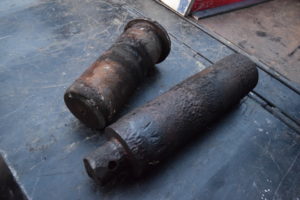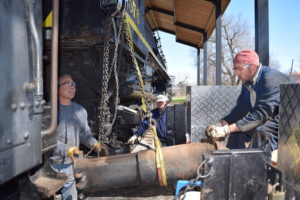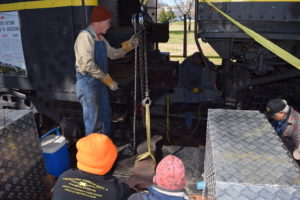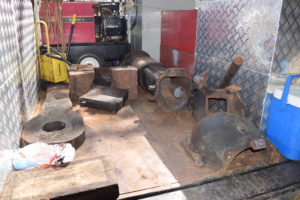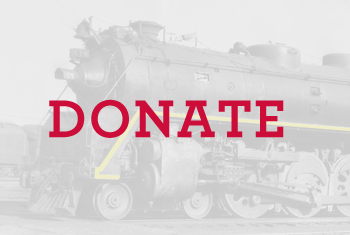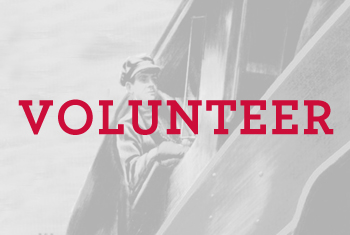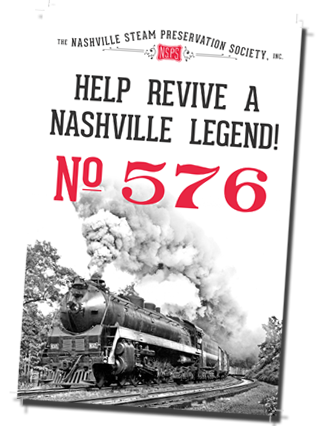
After more than sixty years of standing idle together, the tender has successfully been separated from the engine. Weeks of prep work and a very productive work session last week brought the removal of the various mechanical components that connected the two mechanical bodies together. The first step was to remover the buffer spring to allow slack on the drawbar. The drawbar and safety bar are the two principal means of connecting the engine to the tender. The drawbar pins must be removed prior to removal of the drawbar. Once those were removed, NSPS volunteers jacked up the front of the stoker telescoping tube to clear the ball joint and elevator tube. The tube contains an auger that sends coal from the bunker in the tender through the cab floor and into the firebox.
After the telescoping tube was loose, the tender was carefully rolled back using a car mover. Once the tender was secure and the wheels choked, the stoker telescoping tube was chained and the corroded rear bolts were burned out from the clam shell-style connection. The heavily corroded auger was then cut and the entire telescoping tube was maneuvered onto a trailer. The adjustable chaffing block and buffer wedges were then removed followed by the drawbar and safety bar. After all of the parts were loaded onto the trailer, the crew rolled the tender back into place and the wheels were choked. It was amazing how well the tender rolled after sixty years of static display!
Each piece that was removed will be put into storage and evaluated to determine whether it needs to be repaired or replaced. A huge step on the path to relocation!

